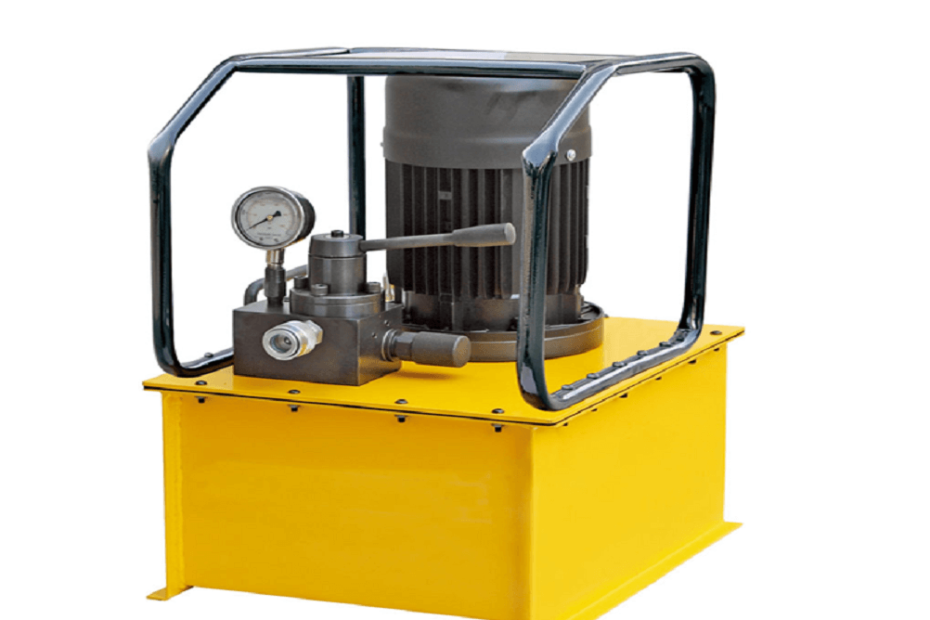Hydraulic systems are essential in many industrial applications because they provide the strength and accuracy required to run large machinery, move large loads, and carry out other critical operations. Among the different types of hydraulic pumps available, the Single Acting Electric Hydraulic Pump stands out for its simplicity, efficiency, and cost-effectiveness. This article will explore the fundamental principles behind single-acting electric hydraulic pumps, their applications, advantages, and considerations for selecting the right pump for specific tasks.
Efficiency Through Hydraulic Pumps
Single Acting Electric Hydraulic Pumps generate hydraulic pressure using an electric motor to drive a reciprocating piston or plunger. “single-acting” refers to the pumping action that occurs only in one direction. When the pump is energized, the piston moves forward, pressurizing the hydraulic fluid in the system and moving it through the connected hydraulic lines to the actuator. Depending on the design, a spring or other external force usually assists the piston during the return stroke.
Simple Return Mechanism
The working principle of a single-acting electric hydraulic pump is relatively simple. When the electric motor receives power, it drives the pump’s piston forward, forcing hydraulic fluid from the reservoir into the hydraulic lines and actuator. This creates pressure, causing the actuator (such as a hydraulic cylinder) to extend or perform the desired work. Once the piston completes its forward stroke, the motor stops, and the fluid returns to the reservoir.
In single-acting pumps, the return stroke is often achieved using an external force, such as gravity or a spring. This design reduces complexity and cost, making single-acting electric hydraulic pumps attractive for specific applications where simplicity is preferred over bidirectional actuation.
Considerations for Selecting Single-Acting Electric Hydraulic Pumps
When choosing a single-acting electric hydraulic pump for a specific application, several factors need to be taken into account:
- Flow Rate and Pressure: The pump’s required flow rate and operating pressure must match the demands of the hydraulic system and actuator to ensure optimal performance.
- Duty Cycle: Consider the duty cycle or the percentage of time the pump will be active during a specific period. A pump operating continuously at high-duty cycles might require additional cooling measures.
- Environment: Assess the environmental conditions in which the pump will operate, such as temperature, humidity, and potential exposure to corrosive substances. Choose pumps with suitable materials and protective coatings accordingly.
- Noise Level: In noise-sensitive environments, select pumps that produce minimal noise during operation.
- Redundancy and Safety: In critical applications, consider using redundant pumps or safety features to prevent system failure in the event of a pump malfunction.
Diverse Applications
Single Acting Electric Hydraulic Pumps offer a reliable and cost-effective solution for various industrial, construction, and material handling applications. Their simplicity, energy efficiency, and precise control make them attractive for scenarios where bidirectional operation is not required. When selecting a pump, it is essential to consider factors such as flow rate, pressure requirements, duty cycle, environmental conditions, and safety measures to ensure the pump meets the demands of the specific application. With their ability to efficiently convert electrical power into hydraulic force, single-acting electric hydraulic pumps play a vital role in powering efficiency and precision across various industries.
Advancements in Technology
Advancements in technology have led to the development of more sophisticated and efficient single-acting electric hydraulic pumps. Manufacturers continually improve pump designs to enhance energy efficiency, reduce noise, and increase overall performance. Additionally, integrating intelligent features, such as remote monitoring and diagnostic capabilities, allows operators to access real-time data and optimize pump performance remotely. Some modern pumps are equipped with manual valves and motor controls for the internal pressure relief valve for enhanced operational flexibility.
Future Prospects
With ongoing technological advancements and the increasing demand for energy-efficient solutions, the future of single-acting electric hydraulic pumps looks promising. As industries strive for greater precision, reduced energy consumption, and improved safety standards, these pumps will likely continue finding applications in various fields, from manufacturing and construction to transportation and renewable energy.
